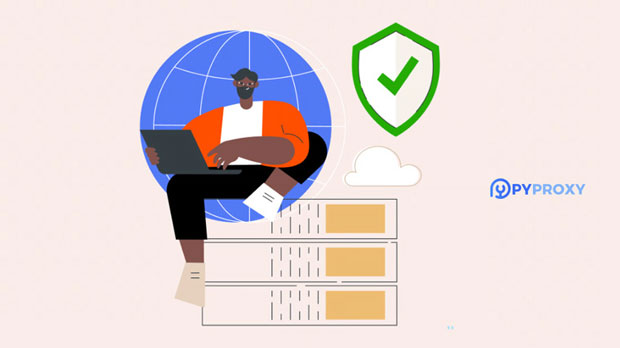When considering proxy protocols, two of the most popular options are SOCKS5 and HTTPS. Both provide anonymity and privacy for internet browsing, but they operate in fundamentally different ways. Understanding their key features and advantages is crucial when choosing the best proxy protocol for your needs. SOCKS5 offers a versatile solution with support for various types of internet traffic, while HTTPS is known for its security, especially for web traffic. Understanding Proxy ProtocolsBefore diving into a comparison of SOCKS5 and HTTPS, it is important to understand what proxy protocols are and how they function. A proxy server acts as an intermediary between your device and the internet. It routes your requests through a remote server, masking your original IP address and providing an additional layer of security and privacy. Proxy protocols define how this communication takes place, influencing factors such as speed, compatibility, and security.What is SOCKS5?SOCKS5 (Socket Secure version 5) is an Internet protocol that facilitates the transfer of data between a client and a server through a proxy server. SOCKS5 is not restricted to specific types of traffic and can handle any kind of internet data, including HTTP, FTP, and even torrents. It is known for its flexibility, supporting both UDP and TCP protocols. Additionally, SOCKS5 provides authentication mechanisms that allow only authorized users to access the proxy.One of the key benefits of SOCKS5 is its ability to bypass firewalls and content filters effectively. This makes it an ideal choice for individuals looking to access restricted or geo-blocked content. sock s5 proxies also provide a high level of anonymity, as they do not modify the data being transferred. However, the downside is that SOCKS5 does not provide encryption for the data, meaning that the traffic is vulnerable to interception if not combined with encryption tools like a VPN.What is HTTPS?HTTPS (HyperText Transfer Protocol Secure) is an extension of HTTP, widely used to secure communication over the internet. Unlike SOCKS5, which is a lower-level proxy protocol, HTTPS focuses specifically on securing web traffic between a client and a web server. HTTPS uses encryption (SSL/TLS) to ensure that data sent between the client and the server remains private and protected from eavesdropping.The main advantage of HTTPS proxies is their ability to encrypt web traffic, providing robust security for online activities. They are particularly suitable for browsing websites, online banking, or accessing sensitive information where data privacy is a priority. However, HTTPS is limited in its functionality, as it only handles HTTP traffic and cannot proxy other types of internet data like torrents or FTP.Key Differences Between SOCKS5 and HTTPSWhen deciding between SOCKS5 and HTTPS, it is important to consider the following factors:1. Speed and PerformanceSOCKS5 is generally faster than HTTPS because it does not involve encryption or SSL/TLS handshakes, which can slow down web traffic. For users who prioritize speed, such as those using proxies for gaming or streaming, SOCKS5 may be the better option. On the other hand, HTTPS can introduce latency due to its encryption processes, which may affect browsing speed, particularly on websites with heavy media content.2. SecurityWhen it comes to security, HTTPS has the upper hand. HTTPS uses SSL/TLS encryption to secure data transmission, ensuring that sensitive information like passwords, credit card numbers, and personal data are protected. In contrast, SOCKS5 does not encrypt traffic, making it more vulnerable to interception. However, this does not mean SOCKS5 is entirely insecure; it simply lacks the built-in encryption that HTTPS provides.3. CompatibilitySOCKS5 is more versatile in terms of compatibility. It supports all kinds of internet traffic, including HTTP, FTP, and torrenting. This makes SOCKS5 ideal for users who need a proxy for various purposes, such as accessing different types of websites, streaming content, or downloading files. On the other hand, HTTPS is limited to web traffic and cannot handle other protocols like FTP or P2P file sharing.4. Anonymity and PrivacyBoth SOCKS5 and HTTPS provide anonymity, but they do so in different ways. SOCKS5 hides your IP address and routes your internet traffic through a remote server, but it does not encrypt your data. This means that your activity can still be monitored if intercepted. HTTPS, however, encrypts the communication between the client and the server, providing an additional layer of privacy. This makes HTTPS a better choice for users who prioritize privacy and need secure browsing.5. Use Case ScenariosChoosing between SOCKS5 and HTTPS depends largely on your use case. Here are some typical scenarios:- For Anonymous Browsing: If you need to remain anonymous while browsing the web, HTTPS proxies are a good option because of their encryption and security features. This is ideal for online banking, shopping, or accessing personal accounts.- For Unrestricted Access: If you want to access content that may be geo-blocked or restricted by firewalls, SOCKS5 is a better option. Its versatility allows it to bypass content filters and provide access to a wider range of websites and services, including torrents.- For Streaming and Gaming: If you are streaming content or playing online games, speed and performance are critical. SOCKS5 tends to offer better performance due to its lack of encryption overhead, making it the ideal choice for users who want to minimize lag and buffering.How to Choose the Best Proxy ProtocolWhen selecting the best proxy protocol, consider the following factors:1. Security Needs: If data security and encryption are your primary concern, HTTPS is the clear winner. It ensures that your browsing activities are secure and private.2. Type of Traffic: If you need to proxy a variety of internet traffic (such as FTP, gaming, or torrents), SOCKS5 is more flexible and suitable for a wider range of activities.3. Speed Requirements: For faster internet speeds and lower latency, SOCKS5 may be more appropriate, especially for activities like streaming or gaming where performance is critical.4. Privacy Concerns: If maintaining a high level of privacy is your priority, HTTPS provides strong encryption, making it the best choice for secure browsing.Choosing the right proxy protocol ultimately depends on your specific needs. SOCKS5 is a versatile and fast option, perfect for users seeking flexibility and speed. However, if security and privacy are your top priorities, HTTPS is the better choice due to its robust encryption. By understanding the differences between these protocols and evaluating your requirements, you can make an informed decision that ensures the best proxy solution for your needs.
Jun 23, 2025



































































